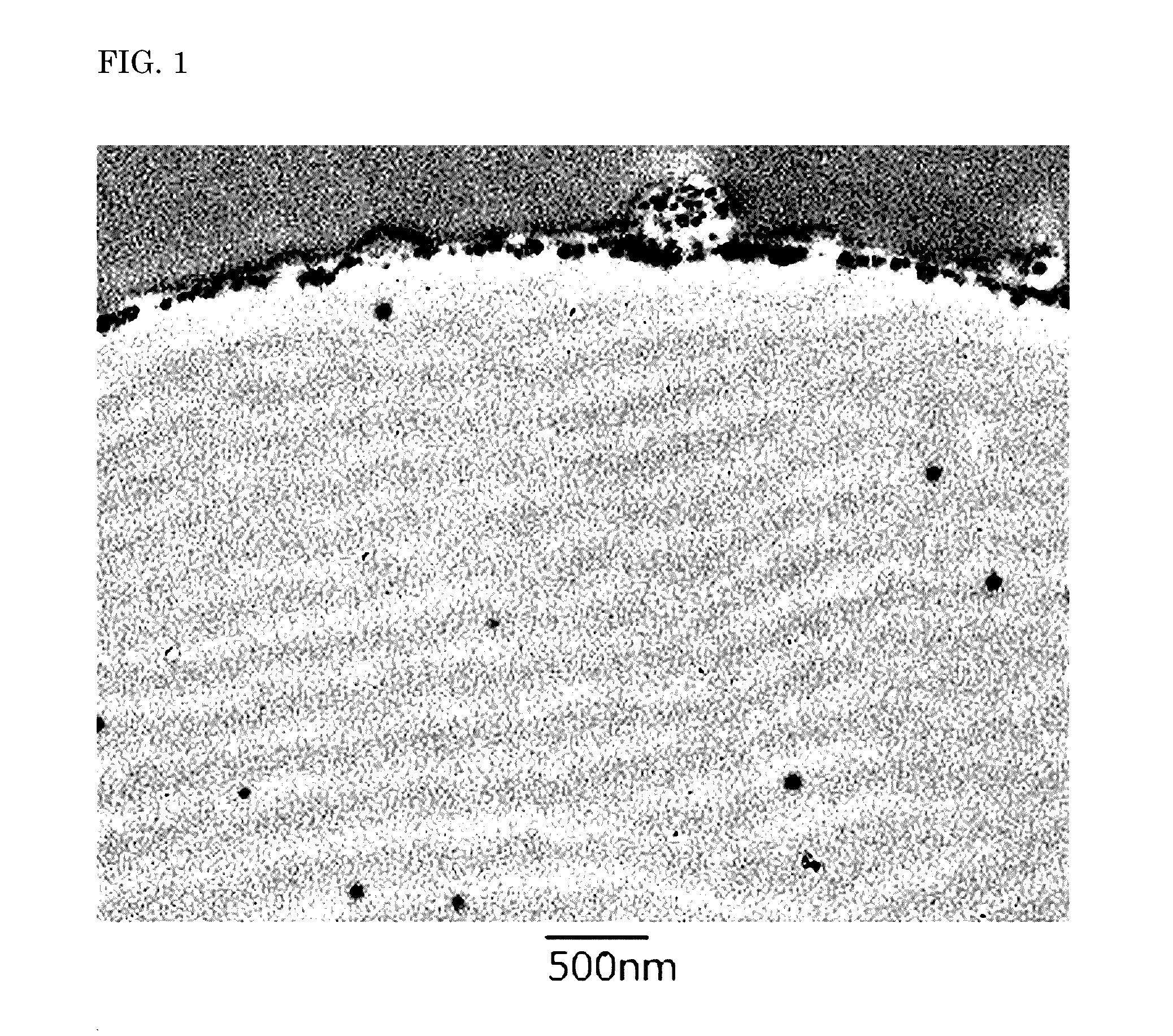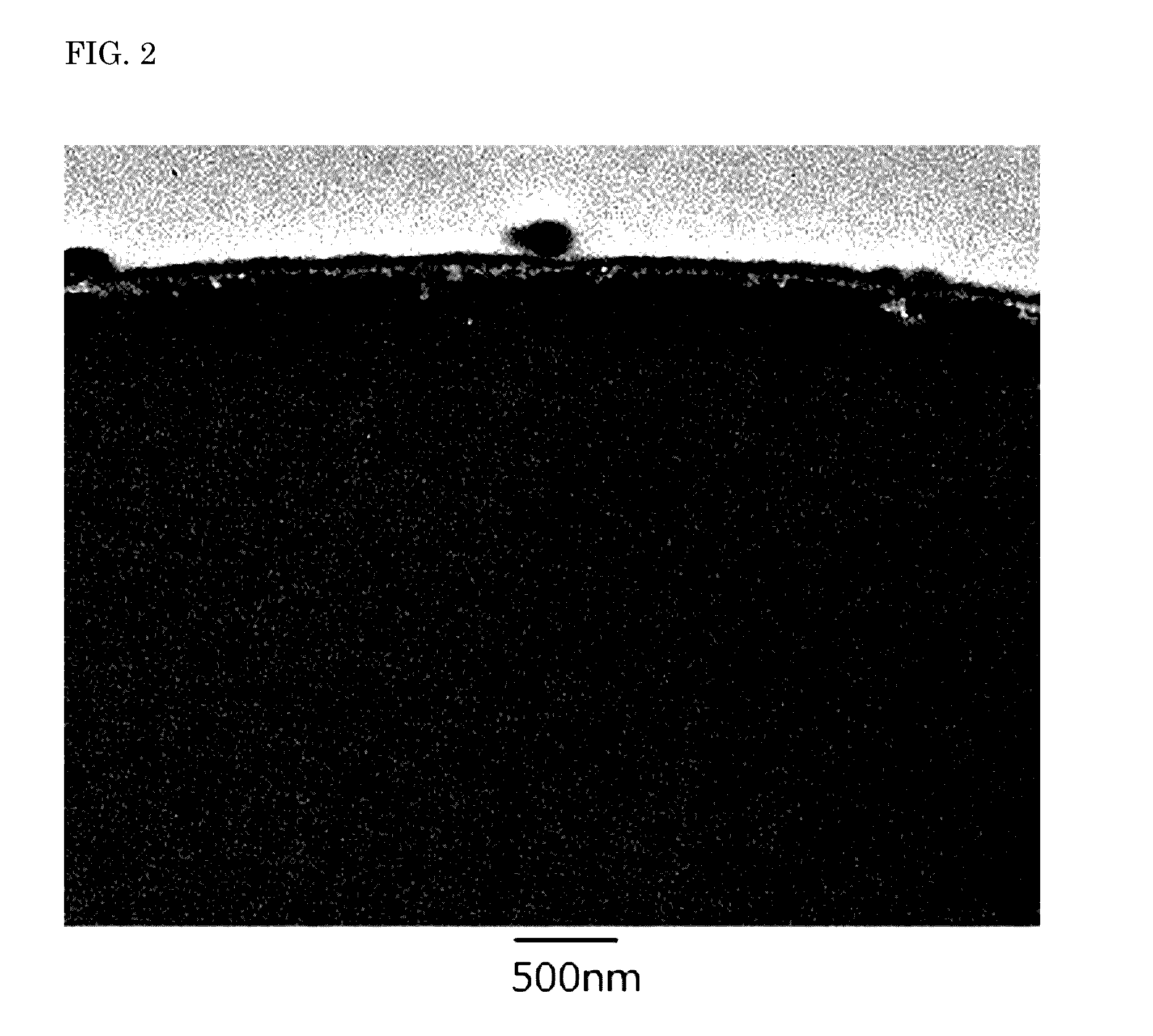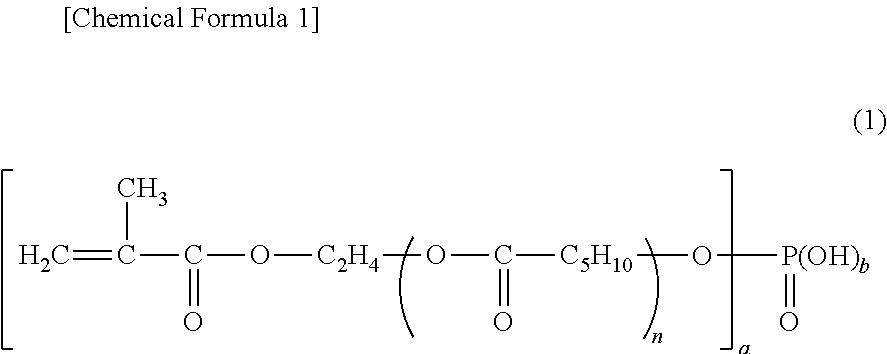Composite particles, method for producing composite particles, and use thereof
a technology of composite particles and composite particles, which is applied in the field of composite particles, can solve the problems of difficult removal of water-soluble polymers which adhere to the surface of polymer particles, the particle size distribution of particles obtained by suspension polymerization is undetectedly wide, and the monomer is excellently stable. , the effect of simple washing step
- Summary
- Abstract
- Description
- Claims
- Application Information
AI Technical Summary
Benefits of technology
Problems solved by technology
Method used
Image
Examples
preparation example 1
Preparation Example of Small Polymer Particles to be Used in Examples
[0237]Into a polymerization vessel equipped with a stirrer, 260 g of water as the aqueous medium, and 1.09 g of polyoxyethylene-1-(allyloxymethyl) alkyl ether sulfate, ammonium salt (trade name “AQUALON® KH-10” manufactured by DKS Co. Ltd.) as the reactive anionic surfactant were supplied. Supplied next into this polymerization vessel was a premixed liquid (the monomer mixture) containing 29 g of methyl methacrylate (MMA) as the polymerizable vinyl monomer (the monofunctional monomer) and 12.6 g of ethylene glycol dimethacrylate (EGDMA) as the polymerizable vinyl monomer (the polyfunctional monomer). The content in the polymerization vessel was heated to 70° C. under stirring at a stirring speed of 200 rpm. After 0.21 g of potassium persulfate as the polymerization initiator was supplied, emulsion polymerization was effected under stirring at 70° C. for 7 hours, thereby giving a dispersion containing crosslinked po...
preparation example 2
Preparation Example of Small Polymer Particles to be Used in Examples
[0239]A dispersion of crosslinked polymethyl methacrylate particles was obtained in the same manner as in Preparation Example 1, except that the amount of methyl methacrylate (MMA) as the polymerizable vinyl monomer (the monofunctional monomer) was changed to 14.7 g, and that the amount of ethylene glycol dimethacrylate (EGDMA) as the polymerizable vinyl monomer (the polyfunctional monomer) was changed to 6.3 g.
[0240]According to the measurement of the volume-average particle size, the crosslinked polymethyl methacrylate particles had a volume-average particle size of 40 nm.
preparation example 3
Preparation Example of Small Polymer Particles to be Used in Examples
[0241]A dispersion of crosslinked polystyrene particles was obtained in the same manner as in Preparation Example 1, except that 29 g of methyl methacrylate (MMA) as the polymerizable vinyl monomer (the monofunctional monomer) was replaced by 29.4 g of styrene (St) as the polymerizable vinyl monomer (the monofunctional monomer).
[0242]According to the measurement of the volume-average particle size, the crosslinked polystyrene particles had a volume-average particle size of 80 nm.
PUM
| Property | Measurement | Unit |
|---|---|---|
| volume-average particle size | aaaaa | aaaaa |
| particle size | aaaaa | aaaaa |
| particle size | aaaaa | aaaaa |
Abstract
Description
Claims
Application Information
 Login to View More
Login to View More - R&D
- Intellectual Property
- Life Sciences
- Materials
- Tech Scout
- Unparalleled Data Quality
- Higher Quality Content
- 60% Fewer Hallucinations
Browse by: Latest US Patents, China's latest patents, Technical Efficacy Thesaurus, Application Domain, Technology Topic, Popular Technical Reports.
© 2025 PatSnap. All rights reserved.Legal|Privacy policy|Modern Slavery Act Transparency Statement|Sitemap|About US| Contact US: help@patsnap.com



